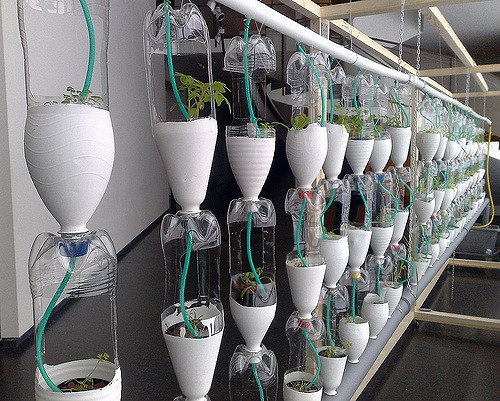
With the expansion of cities, unpredictable climate change and the strain exerted on arable lands by modern agriculture, food and energy management are becoming increasingly challenging.
The windows farming project has been designed to address these problems and mainly that of food shortage. Strawberries, tomatoes, beans, peppers… who has never dreamt of growing healthy, organic vegetables within their own home? This is precisely what window farming, which can also be defined as apartment gardening, promises to achieve.
Founded in 2009, the window farm project was created as a participatory platform where anyone could seek advice to create their own window farm. It was originally developed by Britta Riley, a New York artist from Brooklyn, whose desire was to break the dependence of consumers on the all-powerful agro-food industry. The movement encourages individuals to take responsibility for environmental issues rather than leave these matters to specialists or politicians.
When developing the window farm concept, Britta Riley was inspired by the hydroponic (out of the ground and without soil) cultivation system run by NASA. This type of installation offers the double advantage of optimum luminosity and moderate temperatures, essential elements for plants to grow. A window farm is therefore a hydroponic urban gardening system that allow crops to grow vertically, out of the ground and near a window. All the necessary equipment to build a window farm is cheap and easy to find: recycled water bottles, clay pellets, plastic tubing and an inexpensive fish tank air pump. Maintenance costs are even more minimal. Plants are hung in recycled plastic bottles containing clay pellets that are irrigated via an automated system. The cap of each water container has a hole in it so that the water and nutrients can drip from one container to the next, from the top to the bottom of the column of plants. The bottom containers are connected to tubing that takes the water and nutrients into the bottom reservoir, where it sits until the pump turns on again thanks to a timer. It is only necessary to replenish the window farm with water and nutrients once a week. Window farming does not allow the cultivation of all types of vegetables, particularly those requiring pollination or root vegetables and grain crops, which require a lot of space. However, it is possible to grow lettuce, tomatoes, peppers, strawberries, herbs and many more.
The advantages of window farms are numerous:
– It enables the optimal use of windows
– It allows plants to grow with a smaller root system
– It limits plants disease and bug infestation
– It weighs much less than traditional soil gardening
– It saves money and space as it is placed vertically
– It produces healthier crops that do not lose their nutritional value in the distribution chain
The window farm project has two main goals. While it empowers citizens to produce part of their own food at home and reduces their ecological footprint, window farming is also an innovative and collaborative concept that brings city dwellers together as a community. It helps them change their consumption habits and improve their quality of life. Today, the trend has gone far beyond the boundaries the US and many individuals from all over the world are creating indoor gardens in urban environments. As more and more city dwellers grow their own food, window farming is likely to gradually become the norm rather than a novelty.
Article by www.agriaffaires.co.uk





Leave a Comment